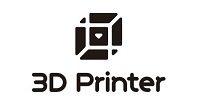Introduction
Prototyping is an essential part of the product development process. It allows designers and developers to test and validate their ideas before investing significant time and resources into building the final product. However, prototyping can be a time-consuming and costly endeavor if not approached strategically. In this blog post, we will explore some effective tips for creating prototypes that are both time and cost-efficient.
Understanding the Importance of Prototyping
Prototyping plays a crucial role in the development process of any product or service. It allows designers and developers to test and validate their ideas, gather feedback, and make necessary improvements before investing significant time and resources into the final product. Effective prototyping can save both time and cost by identifying potential issues early on and ensuring a smooth development process.
Start with Clear Objectives
Before diving into the prototyping phase, it is essential to define clear objectives. What do you want to achieve with your prototype? Are you focusing on user experience, functionality, or both? Having a clear vision will help you stay focused and make informed decisions throughout the prototyping process.
Choose the Right Prototyping Tools
There are numerous prototyping tools available in the market, each with its own set of features and capabilities. Research and choose a tool that aligns with your project requirements and team’s expertise. Some popular prototyping tools include Adobe XD, Sketch, InVision, and Figma. These tools offer a range of functionalities, from wireframing to interactive prototyping, allowing you to create realistic and interactive prototypes.
Start with Low-Fidelity Prototypes
Low-fidelity prototypes, also known as paper prototypes or wireframes, are quick and inexpensive to create. They provide a basic visual representation of the product’s layout and functionality. Starting with low-fidelity prototypes allows you to iterate and make changes easily without investing too much time or effort. These prototypes are particularly useful in the early stages of the design process.
Test and Gather Feedback
Once you have a prototype ready, it’s crucial to test it with your target audience or stakeholders. Conduct usability tests, gather feedback, and observe how users interact with your prototype. This feedback will help you identify any usability issues, pain points, or areas that need improvement. Iterating based on user feedback ensures that the final product meets user expectations and minimizes the risk of costly redesigns later on.
Summary
Prototyping is a crucial step in the product development process, but it can be resource-intensive if not managed efficiently. By following these tips, you can streamline your prototyping process and save valuable time and money:
- Start with low-fidelity prototypes: Begin by creating simple and quick prototypes to test the core functionality and user experience of your product. This allows for early feedback and iteration without investing excessive time and resources.
- Utilize prototyping tools: Take advantage of prototyping tools and software that offer pre-built components and templates. These tools can significantly speed up the prototyping process and reduce the need for coding from scratch.
- Involve stakeholders early on: Engage stakeholders, including clients, users, and team members, in the prototyping process from the beginning. Their input and feedback can help identify potential issues and improve the final product.
- Iterate and refine: Prototyping is an iterative process. Continuously gather feedback, make necessary adjustments, and refine your prototypes. This approach ensures that you are building a product that meets the desired objectives and user expectations.
- Consider usability testing: Conduct usability testing with real users to validate your prototypes. This step helps identify any usability issues and provides insights for further improvements.
- Collaborate and communicate effectively: Foster effective communication and collaboration among team members involved in the prototyping process. Clear communication ensures everyone is aligned and working towards the same goals, reducing potential rework and delays.
By implementing these tips, you can o go to my blog ptimize your prototyping process, save time, and reduce costs while creating high-quality prototypes that accurately represent your final product.
- Q: What is prototyping?
- A: Prototyping is the process of creating a preliminary version of a product or system to test and validate its design and functionality.
- Q: Why is prototyping important?
- A: Prototyping allows for early feedback, helps identify design flaws, reduces development time, and improves the overall user experience.
- Q: What are the benefits of effective prototyping?
- A: Effective prototyping saves time and cost by identifying and resolving issues early in the design process, leading to a more efficient development cycle.
- Q: How can I make my prototyping process more time and cost efficient?
- A: You can make your prototyping process more efficient by setting clear goals, using rapid prototyping tools, involving stakeholders early on, and prioritizing essential features.
- Q: What are some tips for effective prototyping?
- A: Some tips for effective prototyping include keeping it simple, focusing on user experience, testing with real users, iterating based on feedback, and involving the development team throughout the process.
- Q: What are some common prototyping mistakes to avoid?
- A: Common prototyping mistakes to avoid include overcomplicating the prototype, neglecting user feedback, not involving stakeholders, and skipping the iteration process.
- Q: What are some popular prototyping tools?
- A: Some popular prototyping tools include Adobe XD, Sketch, InVision, Figma, Axure RP, and Marvel.
- Q: How can I choose the right prototyping tool?
- A: To choose the right prototyping tool, consider factors such as your project requirements, ease of use, collaboration features, available integrations, and budget.

Welcome to my website! My name is Noah Embry, and I am a passionate Dental Public Health Specialist with a strong interest in prototyping essentials, 3D printing techniques, design software reviews, and custom fabrication tips. I am thrilled to share my knowledge and expertise in these areas with you.
